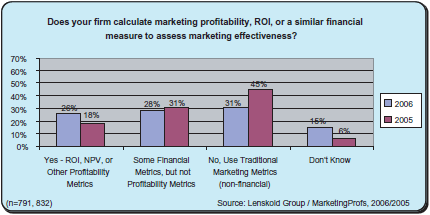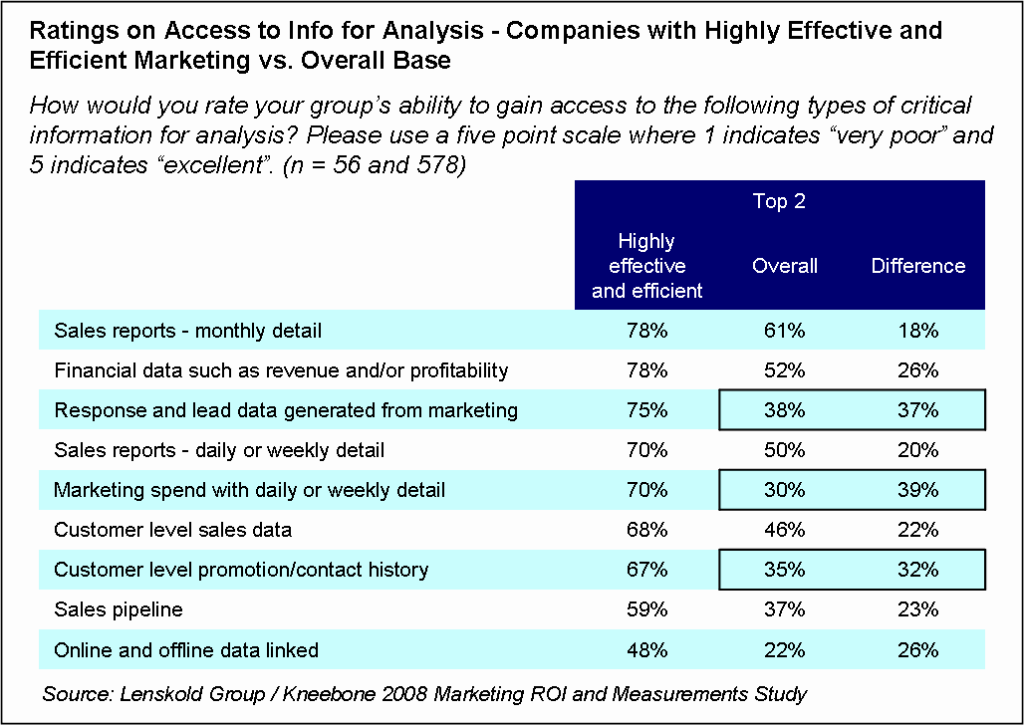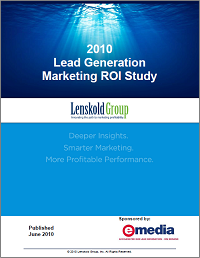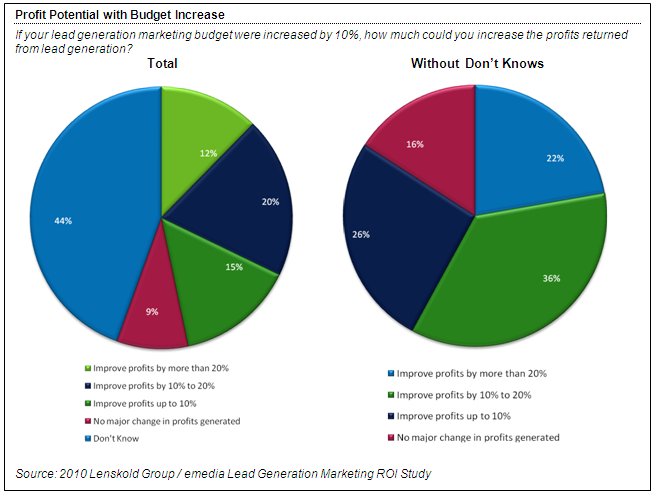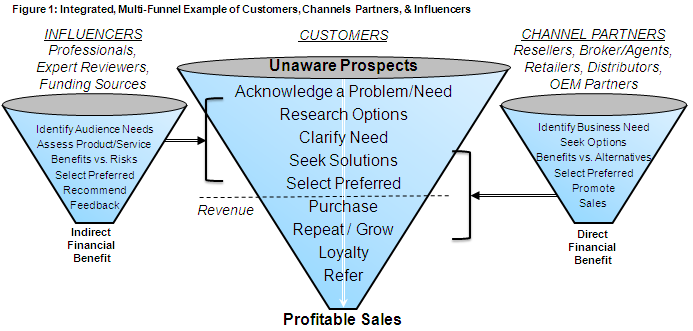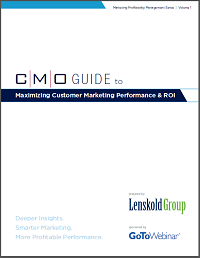Lenskold Article Series
by Jim Lenskold
2005 Marketing ROI & Measurement Benchmark Study
Our first research study back in 2005 set the baseline for use of Marketing ROI and measurement practices.
- Benchmark research on marketing ROI adoption
- What are the primary measurement challenges?
- Where is there greater profit potential?
- How do marketers drive decisions using intuition vs. measurements, and how does this influence marketing performance?
- Recommendations for moving further with marketing ROI adoption

An interesting highlight is how ROI measurement abilities where pretty far from expectations.

By submitting this form with the Subscribe button checked, you are granting: Lenskold Group, 601 Bangs Avenue, Suite 402, Asbury Park, New Jersey, 07712, United States, https://www.lenskold.com permission to email you. You may unsubscribe via the link found at the bottom of every email. (See our Email Privacy Policy for details.) Your e-mail will be kept private and only used for educational content from Lenskold Group as outlined in our Privacy Policy. By clicking on the link delivered via e-mail to download content, you consent to use of a cookie that will provide you access to all other content without completing the form again.




